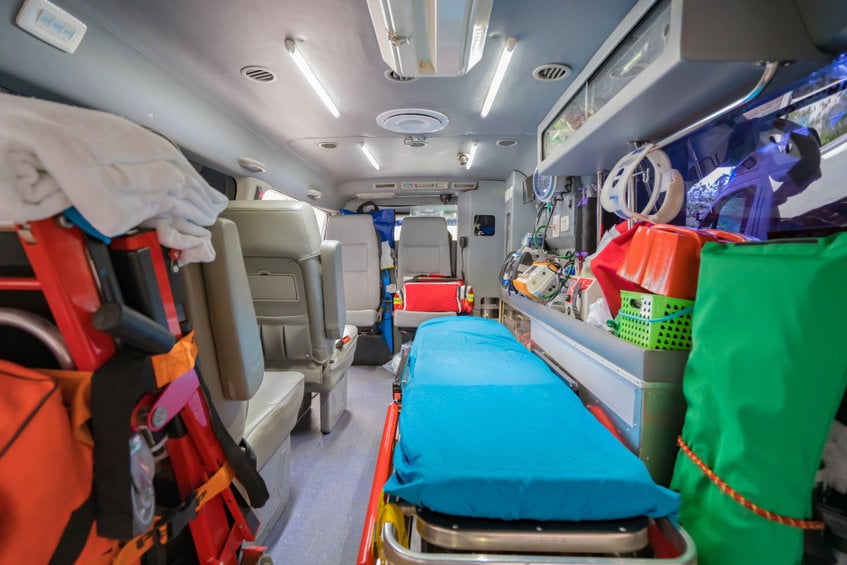
Modern, fully equipped ambulances with well-trained paramedics are marvels, providing services that save lives and maintain seriously injured or ailing patients’ status before they reach an appropriate medical facility. But that goal is only achieved when technicians aboard the ambulance practice safe procedures.
Take airway suctioning for example. It is a common and vitally important procedure in many cases when patients have excess fluid or obstructions in the airway, or to clear the airway before an intubation. It can be filled with risks under normal conditions, but those dangers increase when in a moving vehicle potentially moving at a high speed.
Here is a look at the risks and how to make suctioning in an ambulance safer.
Suctioning risks
- Airway trauma: Even in normal circumstances, there is a real danger of damaging the airway during suctioning. If someone is working too fast, using inappropriately sized equipment, the patient moves or the patient is already dealing with injuries in the same area, suctioning can cause damage. Add being inside a moving vehicle that may be taking sharp turns or hitting bumps in the road, and that risk multiplies.
- Hypoxia: One of the biggest risks in suctioning, hypoxia is when a patient has low oxygen in their blood or tissues. It can occur if the suctioning equipment stimulates the vagus nerve, causes trauma that occludes or blocks the airway, or if the suctioning is simply ineffective in removing an obstruction. Pre-oxygenation is crucial to avoid hypoxia, and if the suctioning fails, the pre-oxygenation must be performed again.
- Bradycardia: A slower-than-normal heart rate, or bradycardia, can also occur from stimulation of the vagus nerve — something that is more likely during an ambulance ride if the technician is less steady because of the motion. The condition increases the risk of fainting or a loss of consciousness, while for patients in cardiac distress, bradycardia can severely elevate those complications.
Make ambulance suctioning safer
- Secure mounts/equipment: Many ambulance crews use portable suctioning machines to perform suctioning where a patient lies, or they may have wall-mounted devices for quick access inside the vehicle. No matter the equipment, ensure everything is either stowed or secured safely before the vehicle begins to move. If an aspirator were to suddenly fall or slide during a procedure, it may result in injury to the patient or even to others.
- Clean/organized space: When an ambulance is clean and organized, it’s easier to find critical equipment. During an emergency, the last thing a responder wants to do is search for a misplaced suction tip or catheter. Properly disinfecting the space is important, too, to keep harmful bacteria or aerosols from infecting the patient while their airway is open.
- Safe driving: In an emergency, especially when a patient’s survival or long-term health is a race against time, it’s difficult to say, “Watch your speed,” but driving haphazardly is a risk not only to the patient but the other occupants of the ambulance. In fact, fatal crashes among first responders are at least 2.5 times more common than in other occupations. Drivers must familiarize themselves with the vehicle — how it handles turns, blind spots, braking, etc. — so they can handle moments when more urgent driving is required. When patients are on board, drivers must be cognizant of other vehicles and pedestrians (even those who are far away) and monitor their surroundings for road hazards.
Use the right equipment
Another strategy for safe and smooth suctioning, whether it’s on the ground or in a moving ambulance? Have the best equipment.
SSCOR has a durable and reliable roster of EMS-centric suctioning devices. The lightweight and powerful S-SCORT III is the standard for many EMS agencies, and the portable SSCOR VX-2 has an option that comes with a charging/retention bracket.
Need a hand choosing? Check out our Ultimate Guide to Purchasing a Portable Emergency Suction Device — and stay safe on the roads.
















